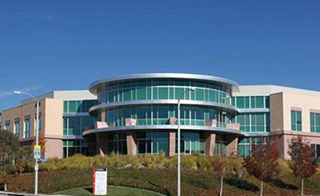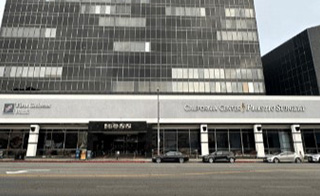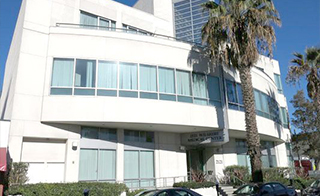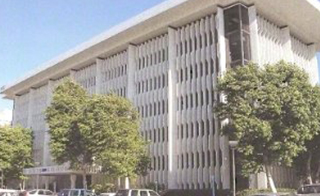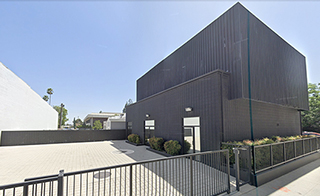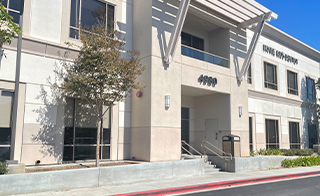Tearing Problems Los Angeles
What are some causes of tearing?
The delicate surface of the eye requires constant lubrication to maintain good vision and guard against damage. The human body therefore has a unique and complex system of tear production and drainage to accomplish this protection. The tears are produced by the lacrimal glands, which are located below the outer edge of the eyebrows in the eye sockets. They then flow across the eye and empty into small holes that are located in the inner corners of the upper and lower eyelid. Those holes open up into a system of drainage tubes that eventually empty into the nose and throat.
Excess tearing can be caused by either overproduction of tears or insufficient drainage. Problems such as dry eye disease and ocular surface irritation can cause the body to reflexively produce more tears. Additionally, changes in the position of the lower eyelid such as drooping or laxity can lead to tearing. In other cases, tearing can also be caused by a narrowed or blocked tear drainage system.
What are the causes of blockages in the tear drainage system?
Most commonly, the reason that patients develop a blocked tear drainage system is unknown. Dysfunction or blockage can occur on one or both sides. This problem can be associated with a history of trauma to the face or nose, history of nasal or sinus surgery, or history of certain cancers and certain chemotherapies.
How can tearing be treated?
Excess tearing due to dry eye syndrome can be treated by controlling the underlying disease. The doctors at Eyesthetica treat severe dry eyes by placing plugs in the drainage system, or punctal occlusion. This is a simple, quick, and painless procedure than can be done in the office.
In cases where tearing is due to drooping of the lower eyelid, procedures to tighten and raise the lower eyelid will improve dry eyes and symptoms as well.
There are a variety of procedures and surgeries that the doctors of Eyesthetica perform to treat tearing related to narrow or blocked tear ducts, also known as nasolacrimal duct obstruction. Children with nasolacrimal duct obstructions from birth can be treated by probing or placing a temporary silicone tube in the duct. Tearing problems in adults may be related to a narrow punctum, or opening of the duct on the eyelid margin. This can be repaired in the office with a minor procedure to enlarge the passageway.
Partial or complete nasolacrimal duct obstructions usually require an outpatient procedure such as dacryocystorhinostomy or DCR. This procedure can be performed endoscopically or via a small incision on the side of the nose.
What to Expect During Your Tearing Consultation
The tearing consultation allows us to evaluate the specific cause of your tearing. We will take down a detailed health history, including your current medications, chronic medical conditions, and any previous surgeries. You will have some simple in-office testing to determine how well you produce tears and how well your tear drainage system is working. This may involve irrigation of saline solution into the tear duct and evaluation of your nose using an endoscope. If we determine that tearing surgery is suitable for your needs, we can discuss the procedure in more detail. We will go over the surgical steps, your anesthesia options, how to prepare for the day of surgery, and how to plan for your recovery. You will have ample time to ask any questions you have about the operation and its likely outcomes.
What can I expect after tear duct or DCR Surgery?
Tearing surgery, or DCR surgery, is an outpatient surgery that allows you to return home after surgery. After surgery, you may have some soreness around the corner of your eye and bruising or swelling. Some patients have nose bleeding during their recovery period. The head should be elevated for several days with cold compresses used for any bruising or swelling. Normal activities can usually be resumed within a few days of surgery.
A small tube is often inserted at the time of surgery and then removed in the office at a later date. Insurance will usually cover these procedures.
Do you have bothersome tearing? Schedule an appointment with one of our skilled doctors for an evaluation and to learn more.

Call us Today to Schedule a Consultation
Visit the location closest to you today and get ready to look as young as you feel!
Eyesthetica - Valencia Eyelid Surgery
28212 Kelly Johnson Pkwy Suite 239,
Santa Clarita, CA 91355
Eyesthetica - Encino Eyelid Surgery
16055 Ventura Blvd. Suite 750
Encino, CA 91436
Eyesthetica - Santa Monica Eyelid Surgery
2121 Wilshire Blvd #301,
Santa Monica, CA 90403
Eyesthetica - Torrance Eyelid Surgery
3400 Lomita Blvd Suite 401,
Torrance, CA 90505
Eyesthetica - Pasadena Eyelid Surgery
50 Central Court
Pasadena, California 91105
Eyesthetica - Irvine Eyelid Surgery
4980 Barranca Pkwy Suite 190,
Irvine, CA 92604


